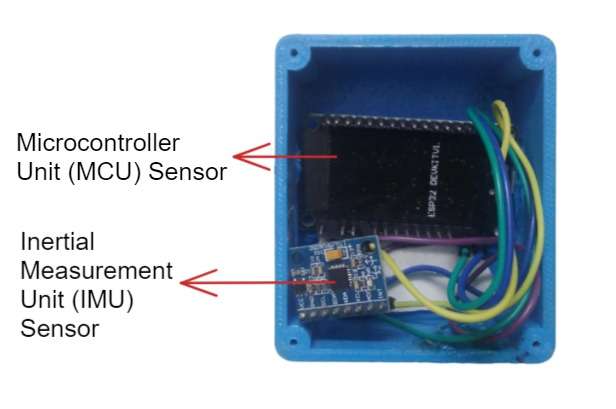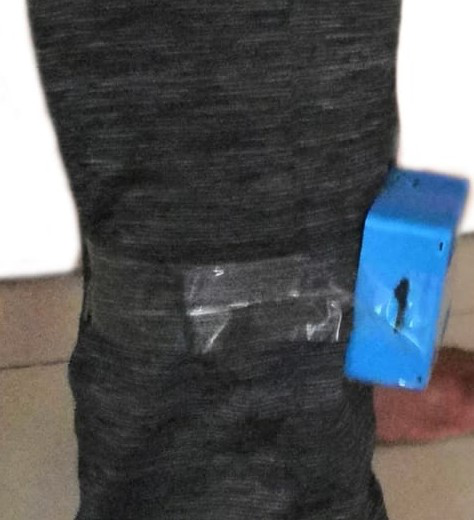- The system was designed and developed using an ARM Cortex M3 core ultra-low power microcontroller with Bluetooth ver 2.0, an MPU 6050 3-axis accelerometer and a 3.74V Lithium polymer (LiPo) battery with voltage regulator for power supply.
- The accelerometer has a mass in the sensor that has finger-like protrusions. During a movement, the distance between these protrusions changes, which also changes the capacitance between the protrusions.
- This changing capacitance is measured, converted to a signal, and calibrated to a specific acceleration or force. The sensor has a pair of three 16-bit ADCs for digitizing the output. The sensor has a minimum full-scale range of +/-2g and a maximum full-scale range of +/-16g.
- The sensed data is transmitted via UART from the microcontroller to the Bluetooth module HC-05 V2.0.
- This module is further paired to a smartphone, where all the computation is performed through a mobile application. Below shown is the diagram of the components of the box.

This box will be worn on the calf muscles (as shown in the figure), and the data will be collected per the movements.

Below is the video of the use of sensors and raw data collected.
https://drive.google.com/file/d/1R6YzOPZcQm34cROYJY8Eg0B1JtoHaIs3/view?usp=sharing
